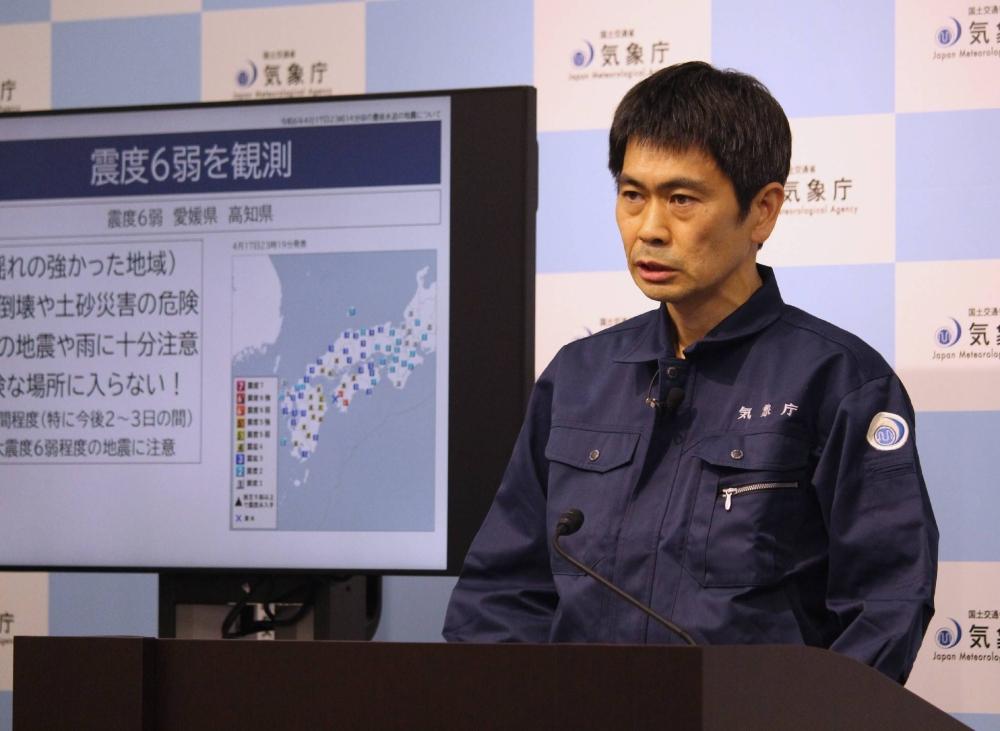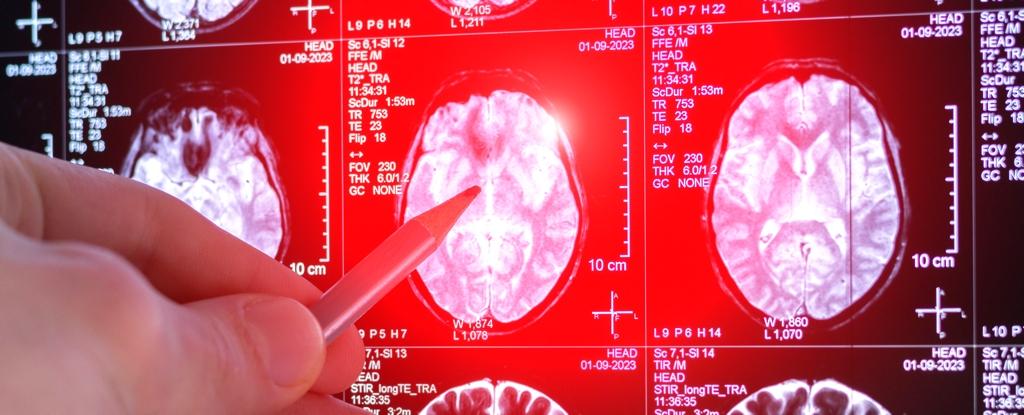A magnitude 6.6 earthquake, measuring a lower 6 on Japan’s seismic intensity scale, struck off the west coast of Shikoku island on Wednesday night, but authorities reported no link to a potential Nankai Trough quake.
The quake measured a lower 6 — the third highest level — in the Ehime Prefecture town of Ainan and the Kochi Prefecture city of Sukumo.
No abnormalities have been detected at Shikoku Electric Power’s Ikata nuclear power plant in Ehime Prefecture, according to the Nuclear Regulation Authority.
The Meteorological Agency initially reported the quake as magnitude 6.4, but later revised the figure to 6.6.
Satoshi Harada, head of the agency’s earthquake and tsunami monitoring division, told a news conference early Thursday that the magnitude of 6.6 is below the 6.8 threshold that would necessitate an investigation into any relation with a Nankai Trough earthquake.
The quake has prompted anxieties regarding the possibility of an upcoming Nankai Trough earthquake, which typically occurs every 100-150 years, with the last one occurring 70 years ago.
The Nankai Trough, stretching from the Tokai region to offshore eastern Kyushu, is a hotbed of geological tension where the oceanic plate is subducting beneath the continental plate, accumulating strain at the boundary.
“At this point, we cannot say whether the probability of a Nankai Trough earthquake has increased or decreased due to this event,” he said.
On Wednesday night, an earthquake with a magnitude of 6.6, or a lower 6 on the Japanese seismic intensity scale, occurred off the west coast of Shikoku island. However, no connection to a possible Nankai Trough earthquake was reported by the authorities.
The 11:14 p.m. earthquake did not cause a tsunami. m. , and reports indicated that there had only been minor harm and injuries.
In the cities of Sukumo, Kochi Prefecture, and Ainan, Ehime Prefecture, the earthquake registered a lower 6, the third-highest level. Its epicenter, in the Bungo Channel, a strait dividing the islands of Kyushu and Shikoku, was struck at a depth of 39 kilometers.
In Ehime, Kochi, and Oita prefectures, the earthquake caused nine people to sustain minor injuries, according to authorities’ Thursday morning report. A landslide on a national highway, broken water pipes, and fallen streetlights are among the minor damages that have been reported; however, no fires were reported in the aftermath of the earthquake, they said.
According to the local fire department, one of the injured was an Ainan woman in her 70s who was taken to a hospital after collapsing.
The nuclear regulation authority of Ehime Prefecture has reported that no anomalies have been found at the Ikata nuclear power plant owned by Shikoku Electric Power.
A later revision to the magnitude report by the Meteorological Agency brought the total down to 6 points 6.
In an early Thursday news conference, Satoshi Harada, the head of the agency’s division that monitors earthquakes and tsunamis, stated that the magnitude of 6.66 is below the 6 point 8 threshold, which would require an inquiry into any possible connection to an earthquake that occurred in the Nankai Trough. Even though this earthquake doesn’t fit the criteria for additional research in that particular context, he continued, the agency will still provide updates and arrange expert panels as needed.
Since the earthquake, Harada observed, there has been a continued increase in seismic activity. As the risk of house collapses and landslides has increased in areas where the tremors were strong, the agency has advised residents of the affected areas to be cautious of seismic activity and heavy rainfall for the next week or so.
Concerns have been raised by the earthquake about the potential for a future Nankai Trough earthquake, which happens every 100–150 years on average and the last one happened 70 years ago.
As the oceanic plate subducts beneath the continental plate, strain builds up at the boundary of the Nankai Trough, which stretches from the Tokai region to offshore eastern Kyushu. A sudden release of tension is predicted, along with significant earthquakes and tsunamis.
“This earthquake was caused by a fault shift within the plate, which is deeper than the boundary between the plates,” Harada said in the conference.
“At this point, we cannot say whether this event has increased or decreased the probability of an earthquake in the Nankai Trough.”. The organization is going to keep a careful eye on the area.
Near the Bungo Channel, there have been a few relatively large earthquakes in the past. One such event happened in July 2015 in Oita Prefecture, with an upper 5-magnitude earthquake.
NHK reports that this is the first time a tremor of a lower 6 or higher has been recorded in the prefectures of Ehime and Kochi since 1996, the year the current Japanese seismic intensity scale was implemented.
Wednesday night was quite shocking for people who are not used to strong earthquakes.
The effects of the earthquake were felt strongly at a nearby convenience store in the town of Ainan, where it registered a lower 6. A number of sake bottles and cup noodles fell off the shelves. “Suddenly it started shaking, then my cell phone’s earthquake alert went off,” the clerk said, describing the ordeal. I held on by holding onto my desk during what felt like an extended period of shaking. “.”.
Plates fell off shelves at Keiichi Fujisawa’s (50) nearby Japanese-style pub. He declared, “I have never felt a bigger earthquake than this one.”. “The next time, I need to rearrange things to make sure nothing harmful falls. “.
The earthquake’s intensity was recorded at a lower 5, also in the city of Seiyo, in the prefecture of Ehime. Four patrons of the restaurant there sought shelter beneath tables. The 80-year-old owner expressed her astonishment. “It brought back memories of the 1995 Great Hanshin Earthquake.”. I have been contacted multiple times to inquire about my well-being. “.”.
Additional details:.
An explanation of the shindo scale, which measures the intensity of earthquakes in Japan.
What to do before, during, and after an earthquake: a guide.
Our portal for information about disasters.
Jiji’s information has been included.



